

Biography:
Francesco AVALLONE is Assistant Professor at the AWEP Department, Wind Energy Section, at Delft University of Technology. He received both his MSc and PhD degrees from the University of Naples Federico II. In 2015, Francesco joined Delft University of Technology as PostDoc in Aeroacoustics. During this period, he worked on turbulent boundary layer trailing edge noise mitigation with innovative trailing edge serrations. Since July 2017, Francesco is Assistant Professor. His research interests are airfoil self-noise, acoustic liners and jet installation noise. For his research, he uses both experimental and computational techniques.
Title: Aerodynamics and Aeroacoustics of Duct Wind Turbines for Urban Environments
Abstract:
Ducted Wind Turbines are a potential technological solution to increase wind energy production in urban environment, where the presence of buildings disturbs the flow uniformity resulting in lower wind speed with larger turbulent fluctuations. Since they are installed close to urban areas, they are subject to noise regulations, then an aeroacoustics study is necessary.
In this presentation, the aerodynamic and the aeroacoustics fields of Ducted Wind Turbines with different duct geometries and operating under different inflow conditions and angles of attack are investigated using the PowerFLOW solver.


Biography:
Koen Boorsma is a Researcher at TNO, Netherlands. TNO connects people and knowledge to create innovations that boost the competitive strength of industry and the well-being of society in a sustainable way.
Koen's field of research focuses on numerical modeling and experimental analysis related to wind turbines, precisely field and wind tunnels.
Since 2008 he has developed unsteady aerodynamics and acoustic solvers to analyze wind turbines. In 2014 Koen coordinated the New Mexico experiment: A fully instrumented wind turbine model was tested in the largest wind tunnel of Europe, resulting in a database used worldwide in the wind energy community for model validation.
Koen has been active as a coordinator and contributor to international projects (IEA Task 29 and 47), EU projects (e.g., EU AVATAR, INNWIND, IRPWind), national research projects, and as an industry consultant.
Koen has worked as a reviewer for several international journals, conferences, and national and international project proposals. Further, Koen has been an advisor to Master and Ph.D. students.
Title: Challenges in Dynamic Modeling of Future Wind Energy Systems
Abstract:
A growing demand for clean energy has pushed further development of wind energy concepts. Conventional horizontal axis wind turbines (HAWTs) have grown taller with large and flexible blades. Offshore wind energy has been given a boost, where floating concepts are starting to make their way into the market. In the light of the above-mentioned developments, vertical axis wind turbines (VAWTs) have received renewed interest due to their low center of gravity combined with a good upscaling perspective.
All of the mentioned developments involve challenges in their dynamic modeling. Low computational cost methods are necessary to resolve the dynamic load envelope to perform fast design iterations but with sufficient accuracy. Some of the modeling efforts at TNO to progress these challenges are highlighted in the current presentation.
Validation of rotor aerodynamic models for HAWTs using a field aerodynamic database with detailed measurements is highlighted. A novel implementation of the blade element momentum (BEM) method to account for floater motions is illustrated. Lastly, aero-elastic modeling of a vertical axis wind turbine concept is under investigation.


Biography:
Martin CARDAUN studied Mechanical Engineering, focusing on power engineering, at the RWTH Aachen University from 2010 to 2016. In 2016 Martin switched to the master's program of Power Engineering, specializing in regenerative energy technologies. Martin graduated in 2018 successfully with an M.Sc.
Since June 2018, Martin has worked as a research assistant at the Chair for Wind Power Drives at the RWT Aachen. His primary focus is on the MBS simulation analysis of gearless wind turbines' overall dynamics and acoustics. Since 2020, Martin has been the Team Lead of the Plant Design at the Chair for Wind Power Drives group.
Title: Wind Turbine Load Calculations with Nonlinear Flexible Rotor Blades
Abstract:
The trend towards increasing the power output of modern wind turbines leads to higher towers and longer rotor blades, resulting in more flexible structures. As these components increase in size, nonlinear structural behavior becomes increasingly important.
Therefore, accurate multi-body simulation models that consider nonlinear effects are needed. This presentation will present the workflow and usage of a new Simpack functionality for nonlinear model order reduction. With an exemplary rotor blade model, several tests will be done for both static and dynamic load cases as well as complete system simulations. It will be shown that nonlinear flexible bodies in Simpack agree with comparative calculations in finite elements software.

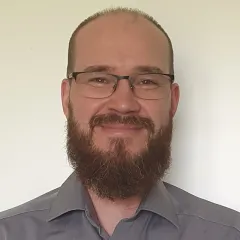
Axel joined Simpack AG as a project engineer for multibody real-time simulation and combustion engine simulations in 2005 after graduating with a diploma in applied mathematics at the Friedrich-Alexander University in Erlangen, Germany. After engaging on several projects in the area of multibody system simulation he took over product management responsibility first for Simpack combustion engine applications and later for the complete Simpack standalone product.
Today he is the responsible product manager for integration of Simpack solver technology into the 3DEXPERIENCE platform through integrated native motion apps.
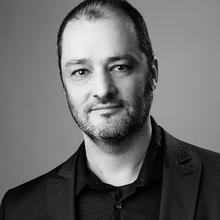

Biography:
Stefan DIETZ’s mission is to explore and make available new multi-scale physics for structures and motion simulation, to maintain and expand existing technology. Stefan leads the team flex body analysis, which contributes to the Abaqus and the Simpack solver.
Before the acquisition of Simpack AG by Dassault Systèmes Stefan was responsible for product management, customer support, and training for flexible bodies in the multibody system code Simpack. Stefan received a Ph.D. in 1999 in aerospace engineering.
Title: Structural Models for Wind Turbine Design
Abstract:
In contrast to high-resolution finite element methods, a strength of multibody system models is the description of the complex mechanical systems with a comparatively small number of degrees of freedom, which leads to a low computational effort. This is necessary for the analyses of multiple design variants. Different levels of modelling fidelity enable the optimum balance between computation time and depth of results to be achieved. Beam models are the obvious choice for modeling the flexibility of rotor blades in early design phases. The presentation covers the recent enhancements of composite beam models in Simpack and Abaqus. For a wide range of components where the assumption of small deformation and a linearized material law is sufficient, the modeling workflow starts with the generation of a reduced finite element model. A number of such models can now be assembled into a single linear flexible body, which improves the handling, and reduces computation effort, of a modular database. The presentation will also cover the preparation of linear flexible bodies in the structures apps of the 3DEXPERIENCE platform.


Biography:
Jochen HARMS finished his study of mechanical engineering at the Technical University of Hannover, Germany, in 2001 with the degree of Diplom-Ingenieur.
Starting his career as a consultant at BMW in Munich, Jochen worked for six years in the virtual design of acoustic and driving comfort, performing FEM and multi-body simulations of the drivetrain and complete vehicle.
Moving to Hamburg in 2008, Jochen worked for the next five years as a System Simulation Engineer at the wind turbine manufacturer PowerWind. He was responsible for load calculations and wind turbine system simulations.
During 2012, working as a project engineer for the SIMPACK AG near Munich, Jochen developed a wind turbine load calculation tool for Simpack.
In 2013 Jochen started his own freelance business, founding elb|sim|engineering, offering engineering services in the development of wind turbines. The development projects focus on the multi-body simulation with Simpack, the load calculation of wind turbines, and the programming of simulation tools and processes.
Title: Load Calculations with Simpack and Integration into Company-specific Workflows
Simulation of a Self-Positioning Blade Installation Tool
Abstract:
The development processes for wind turbines are subject to constant optimization and improvement, especially in view of ongoing market pressure.
Many manufacturers are now replacing their conventional load calculation software with more powerful and sophisticated simulation tools to achieve higher optimization levels. As a result, the multi-body system simulation software Simpack is becoming a primary focus of OEMs and suppliers.
The first part of the presentation describes how a load calculation process with Simpack can be developed and easily integrated into already existing company-specific workflows.
Recently, a device has been used for blade assembly that can hold and position the rotor blade independently and stably without the support of taglines. Especially on construction sites where space is limited, this leads to a significantly easier and faster assembly of the rotor blades.
For new and larger blade designs, the question arises in advance for which wind conditions the device can still hold the rotor blade in a stable position.
The model setup, simulations, definition of load cases, and the result postprocessing will be shown to answer this question.


Biography:
Bertrand LACOSTE-BOURGEACQ joined the Dassault Systèmes brand CATIA R&D organization for Systems Engineering Solutions as a Mechanical Engineer seven years ago.
Since then, Bertrand has occupied different positions, i.e., becoming part of the Industrial Equipment Industry Solution team as a Technical Consultant for modeling and simulation solutions and then taking on the management position of the Industrial Equipment Offer Portfolio and Technical team.
Bertrand is passionate about transformation and innovation, but most importantly, dedicated to serving industrial equipment manufacturers in their journey to success.
Title: Digital Thread for Wind Power Equipment with the 3DEXPERIENCE Platform
Abstract:
As wind turbine manufacturers ramp up production in saturated markets, the need for geographic expansion becomes inevitable. Thus, they must ensure that their production strategies deliver on quality and cost goals throughout a wind turbine’s 20-year operational lifecycle.
Even though the wind energy industry is rising, it is essential to focus on innovation to compete with other energy supply markets. Increasing economies of scale, more competitive supply chains, and further technological advances will continue to reduce wind power costs.
To ensure continued growth and profitability, the industry needs to transform its working methods and prioritize adopting new technologies to support its manufacturing and planning needs.
In this session/presentation, we show best practices from different industries and explain how players in the wind power industry can benefit from well-defined processes seamlessly supported by our digital solutions and portfolio.
Learn how the various disciplines can collaborate efficiently and effectively based on a single source of truth on our 3DEXPERIENCE platform.
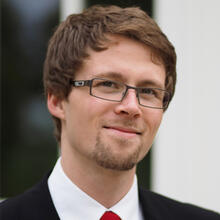

Biography:
Benedikt Michels has joined the DLR Institute for Flight Systems in 2016 as research assistant, after having obtained a Bachelor's degree in Mechanical Engineering and a Master's degree in Aerospace Engineering from the Technical University Braunschweig.
He has since been working on downwash models in the wind energy and helicopter research field and the VAST (and predecessor tools) development in general.
Since 2022, Benedikt leads the DLR-internal project "LAISA", which aims to develop more holistic simulation capabilities for wind farm aerodynamics and aeroacoustics on the one hand, and a more integrated design process for load adaptive rotor blades on the other hand.
Title: VAST as Simpack User Routine for Wind Turbine Aerodynamics
Abstract:
The presentation gives a first overview of the emerging wind turbine simulation capabilities at the Institute of Flight Systems of the German Aerospace Center (DLR), using the multi-body system simulation tool Simpack combined with the in-house developed modular aeromechanics code VAST (versatile aeromechanics simulation tool).
Current activities focus on verification and validation, using a 2.3 MW NM80 wind turbine model from the DAN-AERO experiment.
The Simpack model of the turbine is set up by the DLR Institute of Aeroelasticity, using a python-written conversion suite to transfer the data provided in HAWC2 format into input for the Simpack Rotorblade Generator for the blades and directly create Simpack models for the other components, respectively.
To have at hand a more easily modifiable aerodynamic module in addition to the Simpack built-in FAST-AeroDyn, VAST is extended for wind turbine simulations. The coupling of VAST to Simpack via user-routine has already been developed in a previous joint project in the helicopter research field between DLR-FT and Dassault Systèmes (VaMeSH).
Currently, VAST provides a blade element momentum theory (BEMT) and a free vortex-wake inflow model, both in combination with lookup table airfoil polars. Furthermore, a blade geometry model allows for freely configurable blade shapes. Other wind turbine-specific models cover the tower dam effect or the application of wind fields.
Initial simulations comparing the results with AeroDyn reference calculations have been carried out, showing very good agreement.


Steve MULSKI is a SIMULIA Industry Process Expert - Wind Energy Executive at Dassault Systèmes. Steve holds a Master of Science in Design and Manufacture. Previously he worked for SIMPACK as Hard of Sales and Marketing and Head of Wind Energy Solutions. Simpack was acquired by Dassault Systèmes in 2014.


Biography:
Claus B.W. PEDERSEN is a Technology Director for the Multiphysics/Multidiscipline domain — Structures Science & Technology of R&D SIMULIA, Dassault Systèmes. Claus examines the technology of new optimization methodologies, coding of CAE, and worldwide presale. His role is highly interdisciplinary, working with different teams and organizations involving crossover brand activities from R&D to presale on the latest technology and corporations with leading international universities.
Since receiving his Ph.D. at the Technical University of Denmark in 2002, he has kept his connection to applied science and research. Following this, he worked for the next two years as a Research Associate at Cambridge University, UK.
Claus has worked in the field of optimization for 20 years. He has focused on industrial optimization, developing solutions and apps for function-driven generative design and digital continuity on the 3DEXPERIENCE® Platform, non-linear adjoint solver technology in the Abaqus framework, and other Multiphysics solvers, traditional and additive manufacturing constraints. Working daily with technologies in industrial design workflows applying to many sectors, i.e., aerospace, transportation, renewable energy, high tech, life sciences, and construction, Claus has also specialized in structural optimization solutions for wind turbine components.
Title: Efficient Structural Wind Turbine Designing using Topology, Sizing and Shape Optimization
Abstract:
The present work addresses the challenging topic of methodical obtaining new conceptual designs for structural wind turbine components and improving the existing structural designs of wind turbines.
Typically, topology optimization is applied in the early design phase, where the optimization targets minimize mass considering stiffness, strength, and manufacturing requirements. Topology optimization provides the ability to make early decisions in the mechanical design cycles and reduce costs.
Sheet thickness sizing of non-linear optimization is applied to maximize buckling and post-buckling loading capacity and at the same time minimize mass subject to strength and linear modal eigenfrequency requirements.
For shape optimization, the CAE mesh is adapted where the objective is to minimize the stress or minimize the damage and thereby maximize the safety factors.
Lastly, we address one of the main obstacles in embedding non-parametric optimization methods in the product design process: the lack of efficient CAD- reconstruction methods. To the author’s knowledge, this is the first dedicated workbench for CAD-reconstructed of non-parametric optimization results. Additionally, the process is integrated on the 3DEXPERIENCE platform allowing a complete associated design workflow.


Biography:
Martin SCHULZE's passion for simulation technology started to grow while doing his Ph.D. in Plasma Technology at the Ruhr-University of Bochum, Germany.
Martin then changed his career and moved from the academic sector to working in the industry as a team member of a simulation group of Infineon/Qimonda, a highly regarded group for solving various challenges of semiconductor circuitry design, material design, and manufacturing processes on micro-and down-to-nano-scale. There, Martin deepened his knowledge in CAE and simulation methodologies.
In 2011, Martin joined SIMPACK AG’s Flexible Body team as an R&D member. With the acquisition of the SIMPACK AG by Dassault Systèmes in 2016, he carried on in this field. By now, he is one of the main actors in the development of new methodologies for simulating flexible bodies for all different kinds of use cases, like Nonlinear SIMBEAM, FlexTrack, Nonlinear Flexible, and co-simulation with FE.
Title: Wind Turbine Load Calculations with Nonlinear Flexible Rotor Blades
Abstract:
The trend towards increasing the power output of modern wind turbines leads to higher towers and longer rotor blades, resulting in more flexible structures. As these components increase in size, nonlinear structural behaviour becomes increasingly important.
Therefore, accurate multi-body simulation models that consider nonlinear effects are needed. This presentation will present the workflow and usage of new Simpack functionality for nonlinear model order reduction. With an exemplary rotor blade model, several tests will be done for both static and dynamic load cases as well as complete system simulations. It will be shown that nonlinear flexible bodies in Simpack agree with comparative calculations in finite element software.


Biography:
In his current role, Colin Schwarz provides simulation-based risk assessment on narrow banded machinery noise with a strong focus on gearbox tonality. Together with colleagues, Colin sets up and validates processes based on multibody simulation, which supports such an assessment. Before joining GE Renewable Energies, Colin spent almost five years on the Simpack team of Dassault Systèmes and covered topics like customer and project support, training, and product management. In parallel, Colin has been working on sophisticated wind turbine controllers, also called model predictive control. Besides real-time capabilities to provide a feasible control signal in time, topics like the controller impact on the drive train fatigue strength need to be adequately addressed.
Title: Simulation-Based Wind Turbine Gearbox Tonality Analysis and Risk Assessment
Abstract:
The noise emission of wind turbines and farms can be an important and limiting factor for the acceptance and thus further growth of wind energy. Next to the overall noise emission level, tonal noise from machinery and drivetrain components can be disturbing contributions.
This presentation discusses the modeling of tonal noise contributions that are originated by gearbox teeth meshing, transmitted through complex, structure-borne transfer paths into the machine head, and radiated by tower and blade surfaces. A seamless tool chain of multibody simulation and boundary element method to solve the wave equation is a core feature to integrate such an approach for risk assessment and analysis into established design processes. Its reliability and uncertainty need to be understood very well to drive design decisions early in the design phases.


Biography:
Christopher Teruna has recently obtained his doctorate in aeroacoustics from the Delft University of Technology. While pursuing his Ph.D., he has carried out numerous computational studies using the Lattice-Boltzmann solver, Dassault Systèmes SIMULIA PowerFLOW.
Christopher's research focused on applying permeable materials to reduce turbulence-induced noise, which affects many aerodynamic systems from aircraft engines to wind turbines.
Title: Numerical Studies of Trailing-Edge Noise Reduction with Porous Materials
Abstract:
This presentation demonstrates the usage of a Lattice-Boltzmann solver to study the noise mitigation mechanisms in the application of a permeable trailing edge. The study employs a NACA 0018 airfoil installed at zero angle-of-attack. The permeable trailing edge has been modeled in the simulation as an equivalent fluid region where Darcy's law applies. Due to the limitation of Darcy's law at regions with small thicknesses, an alternative multi-layer modeling approach has been proposed and validated. Subsequently, this approach examines the behaviors of turbulent pressure fluctuations nearby and inside the permeable trailing edge.
It is found that the interaction between pressure fluctuations on both sides of the trailing edge weakens the impedance discontinuity at the trailing edge, which is eventually responsible for the noise reduction.

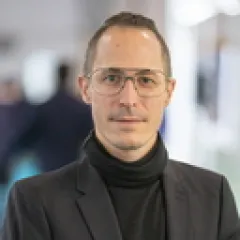
Biography:
Jean-Yves's 16 years of experience in industry sales is focused primarily on the industrial equipment industry. Since 2012, he has driven business development for Renewables, and Power & Fluidic Equipment sectors. Together with the local teams, Jean-Yves defines and executes go-to-market strategies for OEM, engineering offices, and EPC.
Title: Digital Thread for Wind Power Equipment with the 3DEXPERIENCE Platform
Abstract:
As wind turbine manufacturers ramp up production in saturated markets, the need for geographic expansion becomes inevitable. Thus, they must ensure that their production strategies deliver on quality and cost goals throughout a wind turbine’s 20-year operational lifecycle.
Even though the wind energy industry is rising, it is essential to focus on innovation to compete with other energy supply markets. Increasing economies of scale, more competitive supply chains, and further technological advances will continue to reduce wind power costs.
To ensure continued growth and profitability, the industry needs to transform its working methods and prioritize adopting new technologies to support its manufacturing and planning needs.
In this session/presentation, we show best practices from different industries and explain how players in the wind power industry can benefit from well-defined processes seamlessly supported by our digital solutions and portfolio.
Learn how the various disciplines can collaborate efficiently and effectively based on a single source of truth on our 3DEXPERIENCE platform.


Wouter holds a PhD in aerospace engineering and has been working on modeling and simulation topics for over 10 years at Dassault Systemes. He is an senior industry expert and responsible currently for the simulation portfolio, go-to-market material and strategy for the renewables, marine and offshore industry.


Biography:
Zhiliang Xu is a Chief Dynamics Analysis Engineer at Goldwind Science Technology.
In the 10 years, he has mainly engaged in wind turbine dynamics simulation analysis, vibration stability evaluation, FEA, MDO, verification & validation.
Title: Wind Turbine MBS Simulations with Simpack
Abstract:
Firstly, the Software Architecture Diagram of Simpack will be introduced, then the applications of MBS simulations in wind turbines system and sub-system.

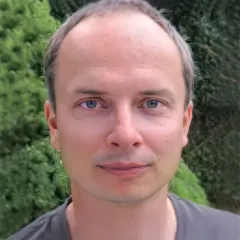
Biography:
After studying Mechanical Engineering at the Technical University Prag, Czech Republic, Jan ZEMAN completed his diploma thesis at Skoda-Auto, using the Multi-Body System (MBS) simulation software Simpack.
In 1999, Jan started working for the SIMPACK AG as a Project and Support Engineer, focusing on the simulation of Vehicle Dynamics (application areas: handling, ride, driveability, durability, NVH). From 2009 to 2014, as the “Product & Project Manager Simpack Automotive”, he was responsible for the Automotive product, customer project, and account management.
Following the acquisition of the SIMPACK AG by Dassault Systèmes in 2014, Jan is now focusing on the SIMULIA MBS/Simpack pre-sales management and strategic key customer engagements in his current role as SIMULIA Multibody Simulation Industry Process Expert Director.
Title: R&D Update on Multibody System Simulation
Abstract:
This presentation will give you an overview of the general R&D updates of the multibody system simulation software Simpack.
We will show you the latest software updates in Simpack, including a few of the updates from the last two years. Further, we will provide an update about application-specific functionalities.
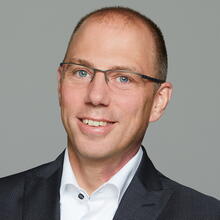

Biography:
Florian Jurecka studied Civil Engineering in Karlsruhe and graduated with a doctorate in Computer-Aided Engineering at the Technical University of Munich. Following this, he joined the start-up company FE-Design and became part of the management team.
After a part-time MBA in Innovation and Leadership at the Technical University of Munich and the acquisition of FE-Design by Dassault Systèmes in 2013, Florian held various senior management positions within the company.
In 2020, Florian was appointed to join the Executive Management team of Dassault Systèmes’ EuroCentral team.
Since 2021 Florian co-leads the Dassault Systèmes simulation division as Vice-President SIMULIA, now heading the worldwide R&D and Strategy organization.